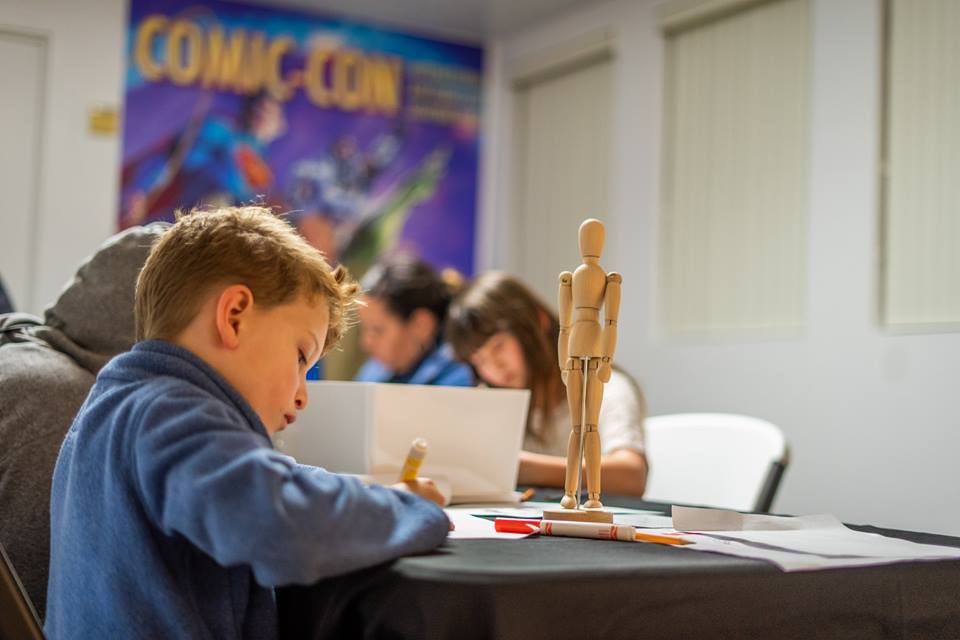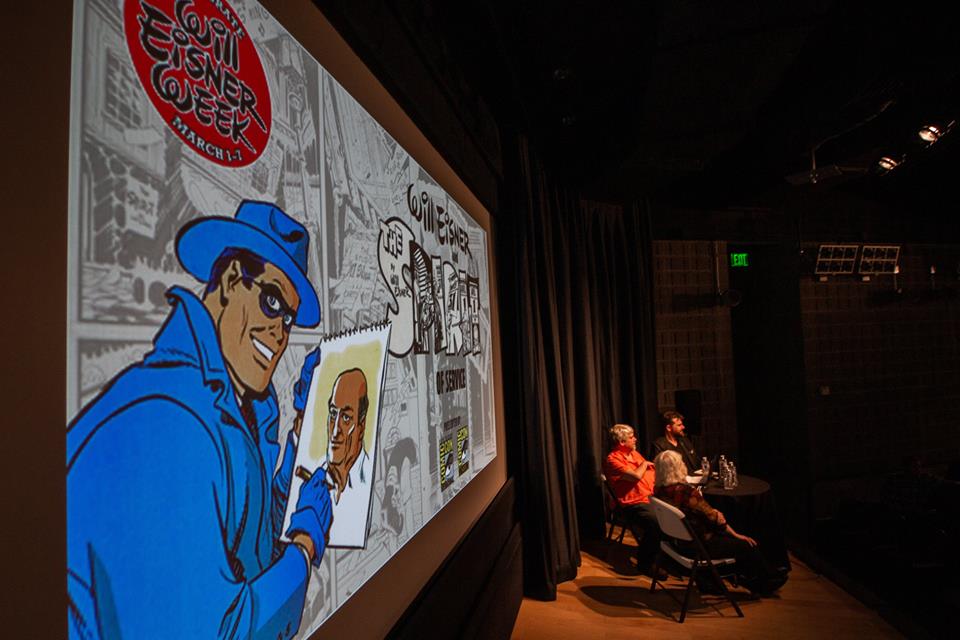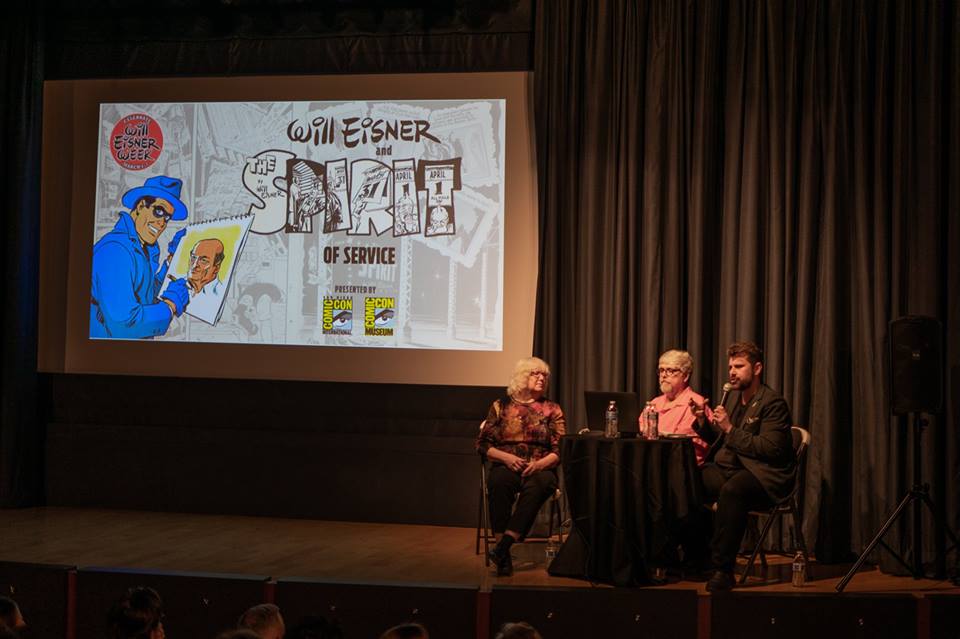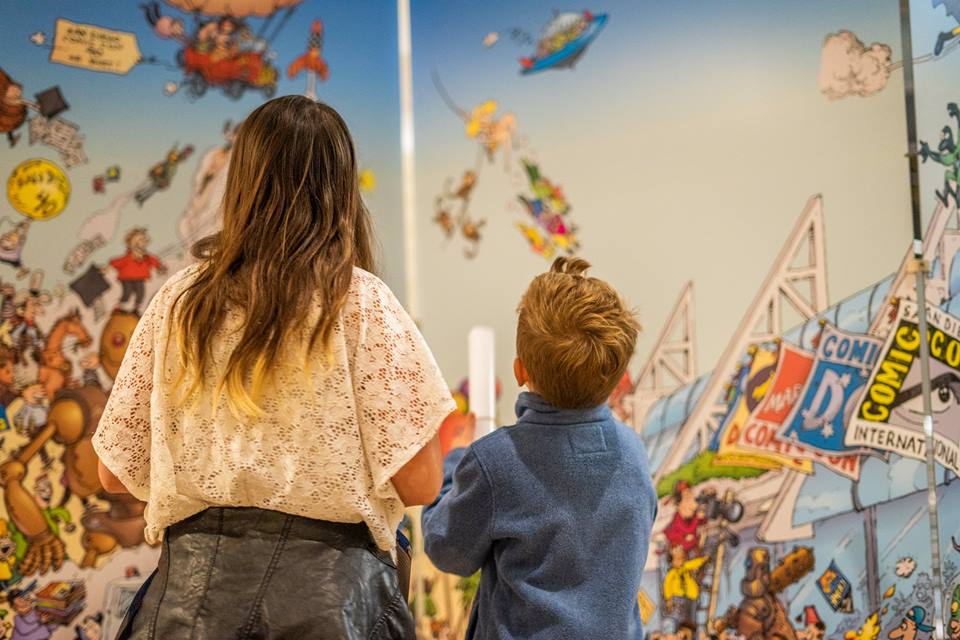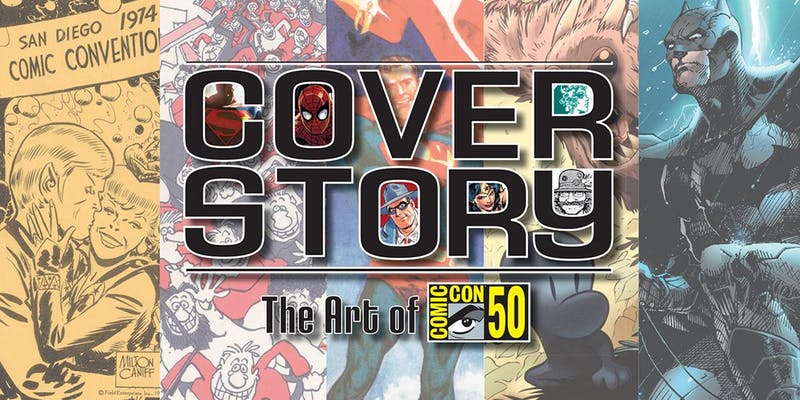The Museum Panel
Had a great time at San Diego Comic Fest this year. Our panel Splashing Ink on Museum Walls with Rob Salkowitz (moderator), cartoonist/illustrator Mark Schultz, SDCC Museum Executive Director Adam Smith, and myself was well-attended. We had a great discussion on several topics. After a brief intro, Rob led a discussion of recent shows that combined old master fine art and comics, like Botticelli and graphic novelist Karl Stevens in Botticelli: Heroines + Heroes at the Isabella Stewart Gardner Museum (Boston).
We had a lengthy conversation about the issue of narrative, and different techniques used by artists and curators to display art and still pay attention to the storytelling function of comics. This was a special concern of Mark’s as his books contain complex stories. We talked about shows that display entire books, like Speigelman’s Co-Mix and Crumb’s Genesis, as well as shows that focused on shorter stories, covers, and a sequence of pages that show a story arc within a larger story.
Adam talked a bit about how the museum is developing and his excitement about having the museum’s first official opening night party for Cover Story just two nights prior to the panel (photos below). He also spoke about about the museum’s experiments with the concept of fan sourced exhibits, and about the strong grassroots support the museum is getting.
I talked a bit about history. Although we had a agreed to talk mostly about recent shows from the last five or six years, I made a quick detour into the 1930s and 40s, because people still think of comics shows as a new thing that has just appeared over the last decade. I also talked about the importance of seeing the original artwork with all the notes and marking for the viewing audience and for other artists.
In audience questions, one audience member accused us of dismissing the important MOMA show High & Low, which eventually led to Masters of American Comics, which was organized in response. The panel touched on it briefly. To me, High & Low and Masters are part of a two decade story that is hard to tell in a couple of sentences (I dedicate an entire section of my book to the dialog between these two shows).
Another audience member wondered if there had ever been a show of pop art style photographic blow-ups of comics panels. I told him that this was tried back in 1967 at the Louvre and no one has done a show exclusively of blow-ups since. Bande dessinee et figuration narrative , was organized by SOCCERLID, group of French intellectuals who loved American comics of the 30s and 40s, They used pop art style blow-ups of comics panels (Caniff, Hogarth, etc) in response to the comics based paintings of Roy Lichtenstein, whom they despised. After the show closed in Paris, it toured to several European capitals in the late 1960s. The Institute of Contemporary Art in London originally planned to have this show, but opted instead to assemble an exhibit of original art. By the mid-1970s, museums, curators, and artists decided that the blow-ups were inauthentic, were kind of insulting (a different way of turning comics into Pop Art), and missed all the elements that made comics unique, like layout and narrative. Audiences valued the aura of authenticity seen in the originals and they appreciated learning about the creative process through all the markings, white-out and other notations. Many shows use blow-ups to show detail or as a design element, but no one has ever done a show of nothing but Pop Art style blow-ups since. Even Masters of American Comics, which specifically focused on visual form, did not do this.
We were all grateful to the audience, who were intellectually engaged and curious throughout the panel.





